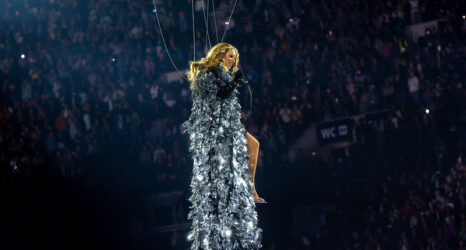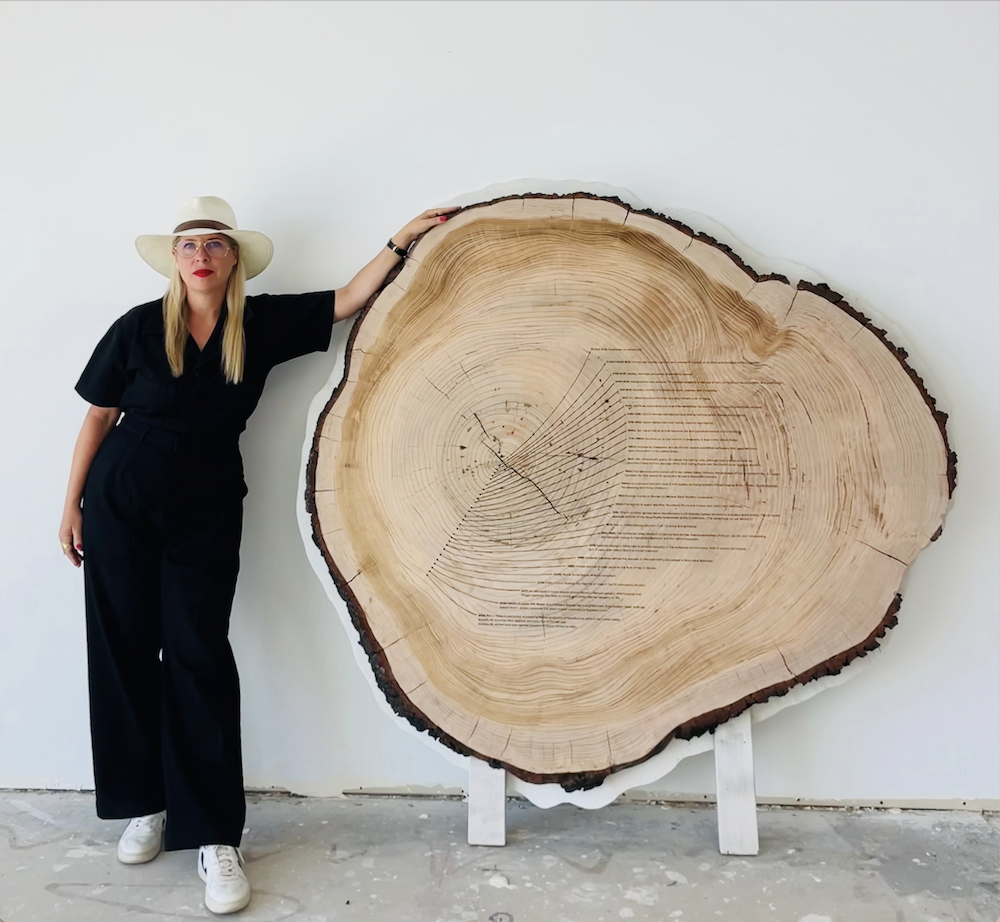“Every moment is precious. If I have a last opportunity to say something, I have to make it through art by telling the truth.”
In Rivne, a city in northwestern Ukraine within a three-hour drive from the Polish border, a mural covers the side of a building along a busy pedestrian thoroughfare: Соборная 183. The painting, “The Beautiful Lady Won’t Endure It,” depicts a woman wearing a traditional Ukrainian costume holding a rifle. She appears brave and determined. The artist, Konstantin Kachanovsky, said the “beautiful lady” represents Ukraine itself.
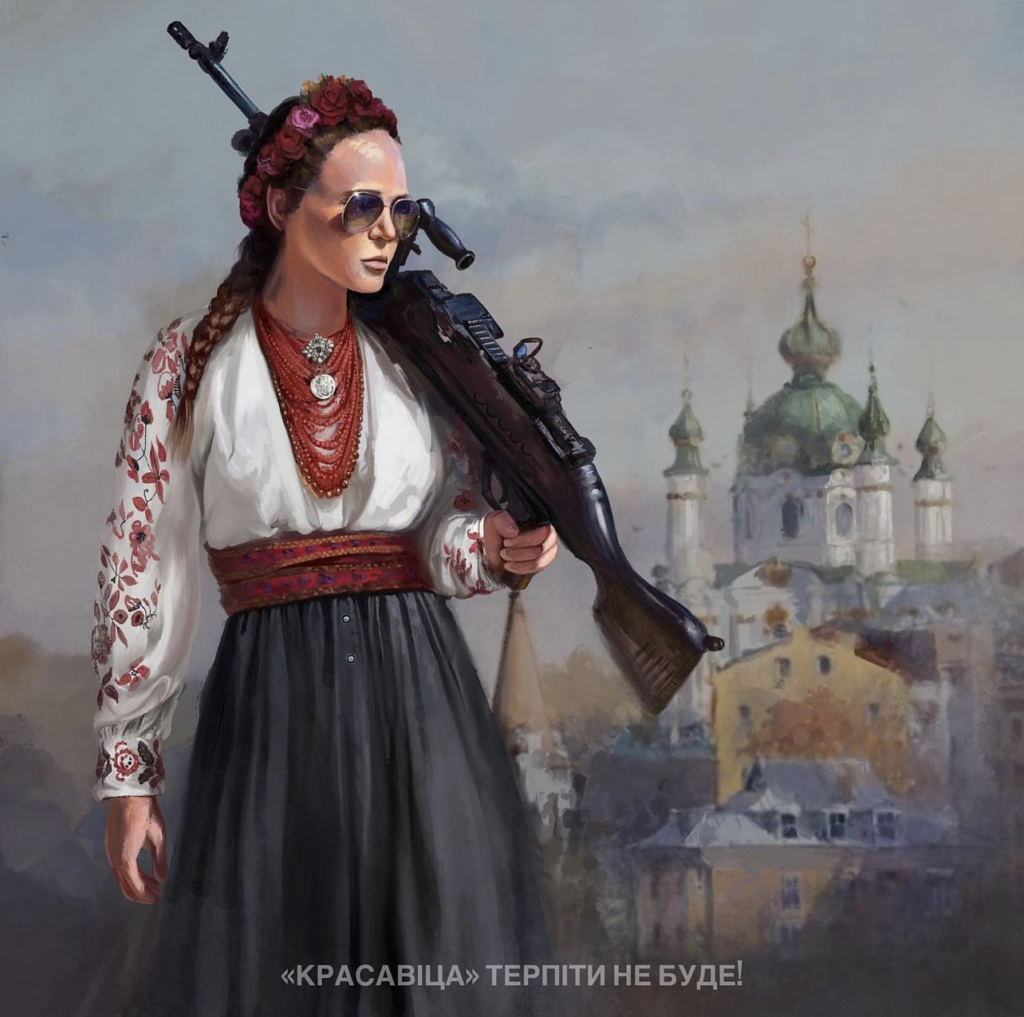
Art inspired by the Russian invasion of Ukraine fills Rivne, where an exhibition of 44 paintings by Ukrainian artists opened last year at The Euro Gallery. The show, “Art of a New Caliber,” included 44 paintings. Half of the funds from ticket sales benefited the Armed Forces of Ukraine—but the show’s ultimate goal was to inspire bravery amidst so much uncertainty.
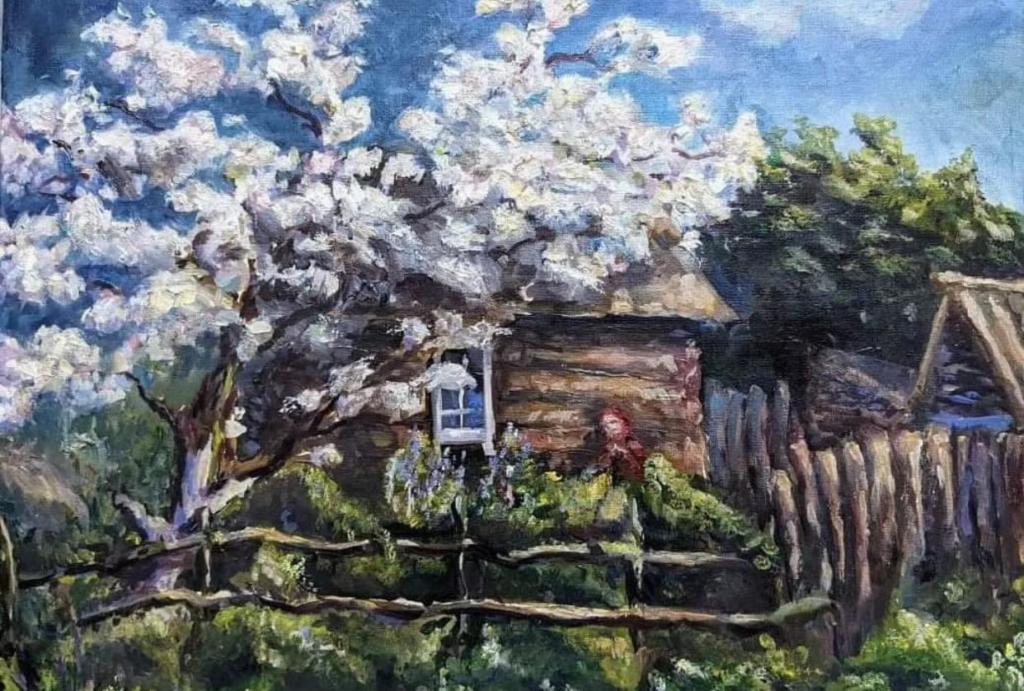
I interviewed several of the Ukrainian artists involved in the show. Everyone I spoke to was expecting a conflict to arise, but not one of this gravity.
Artist Olha Krutiy demonstrates the calm before the storm in her painting “Ukrainian Spring Before the War.” The colors in the work are peaceful; the blooming flowers on the tree blend with the blue sky and clouds. There is no sign of danger or aggression—just a faint outline of a woman who is wearing traditional Ukrainian clothes as she rests her head on the wall of a cabin. She seems relaxed and quiet.
“I couldn’t believe that this invasion actually happened. We talked about it for a couple of months before with my family and friends, but we didn’t believe that it could actually happen,” said graphic designer Olga Drobot.
Konstantin Kachanovsky, the painter of “The Beautiful Lady Won’t Endure It,” was following his usual routine on the Feb. 24, 2022, in the western region of Ukraine. He awoke from a shrieking call from his sister, who lived in the East: “Send us money immediately; people are shooting at us.”
I asked Kachanovsky how his family was managing. “I had relatives and friends in Russia,” he said. “The propaganda fully worked on them and they agree with Putin. We don’t share the same opinion, and now we don’t contact each other anymore.”
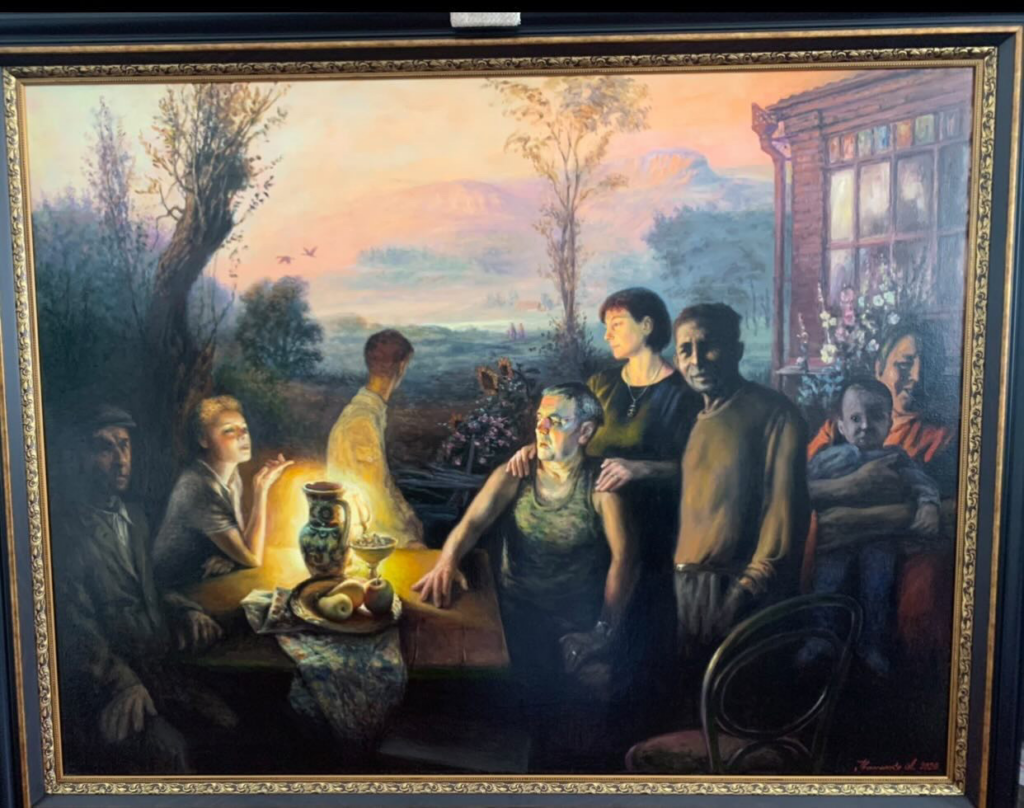
Anatoliy Ivanenko depicts this common issue in his painting “Russian-Ukrainian Family.” The artist illustrates a family with Russian and Ukrainian roots gathered by a table in Donbas, Ukraine. The setting appears peaceful, but the conversation the adults are leading seems tense. The man with his hand on the table is irritated, and his wife is trying to calm him by placing her hands on his shoulders. The adolescent standing at the edge of the table does not want to be included in this uncomfortable conversation between his relatives. He finds peace in watching the sunset instead.
“Our main focus right now is to make sure that the children are safe and that they’re alive,” said Drobot.
In addition to physical danger, children in Ukraine experience anxiety and stress from the ongoing war. Art therapy classes at Euro Gallery have given the children of Rivne a chance to express their concern and support for their country.
The children’s art takes many forms. Some are illustrated, abstract or unrelated to the war, such as a flamingo. Others find hope in creating more patriotic art. One girl drew Ukraine in colors of the flag and in the center of the piece wrote “Ukraine!!!” Either way, the classes allow young people who fled their homes as refugees to use art as a coping mechanism.
But the effects of the war will last a lifetime.
“After one month of war, my nephew used to wake up at night because he had thought he had heard the air raid siren. He asked his parents to go and hide in the bomb shelter, even though there was no air raid siren,” Drobot told me. “Children even today were playing war outside shooting each other with fingers.”
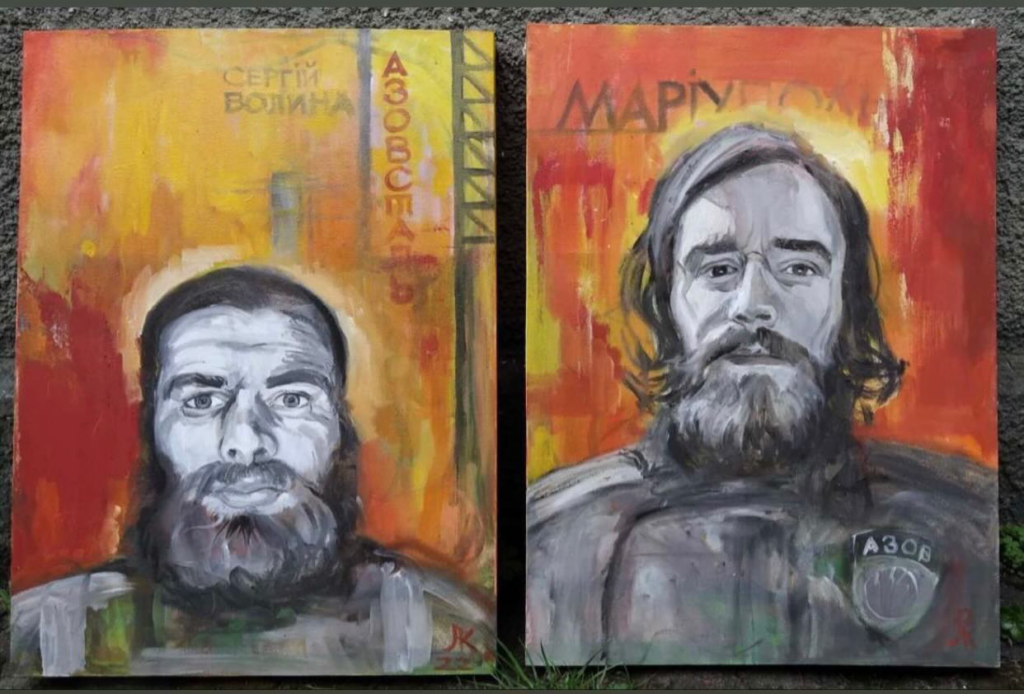
Krailyuk Luba’s paintings portray important individuals who defended the Azovstal steel plant in Mariupol from Russian forces, where Ukrainian fighters waged a three-month siege. These artworks are labeled as “Heroes of Azovstal,” but Luba sets the two portraits on different canvases to highlight the importance of each individual. Both of the paintings’ backgrounds are blurred flames that represent a place of no escape. The artist depicts the heroes in the foreground of the painting, focusing solely on the features on their faces.
Another one of Kachanovsky’s murals is located on the inside of a frequently visited mall by the local people of Rivne. Kachanovsky felt the urgency of the mural and finished in only three days.
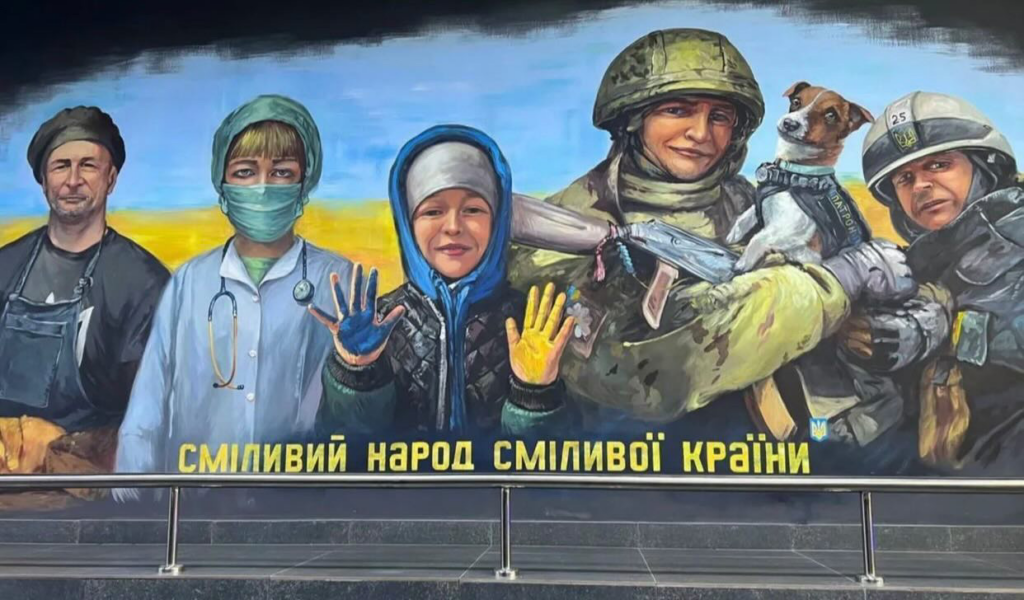
Through the mural, Kachanovsky aimed to represent the bravery of the Ukrainian people and the value of those who fight for the protection of his country. Against a blue and yellow background, he depicts Ukrainians who represent hope and courage: a baker, who provides his people with food; a nurse, who helped deliver babies in bomb shelters; a Ukrainian soldier with a service dog; and a Ukrainian firefighter. In the center of the mural, he illustrated a child, representing the future generation of Ukraine. The child proudly wears the color of his flag on his hands, which are raised up in the air.
Like many men of military age, Kachanovsky was unable to leave Ukraine. “I didn’t have a choice,” he said. “As a man, I wasn’t allowed to leave, and I didn’t have the resources to do so.” Instead he stayed and decided to dedicate his art to the Ukrainian people.
Many have visited Kachanovsky’s murals and taken pictures with them—including Olga Drobot, who feels supported by fellow artists who are making an impact with their dedicated work.
“Every moment is precious,” Drobot said. “If I have a last opportunity to say something, I have to make it through art by telling the truth.”
Up next:
U.S. democracy is at a dangerous inflection point—from the demise of abortion rights, to a lack of pay equity and parental leave, to skyrocketing maternal mortality, and attacks on trans health. Left unchecked, these crises will lead to wider gaps in political participation and representation. For 50 years, Ms. has been forging feminist journalism—reporting, rebelling and truth-telling from the front-lines, championing the Equal Rights Amendment, and centering the stories of those most impacted. With all that’s at stake for equality, we are redoubling our commitment for the next 50 years. In turn, we need your help, Support Ms. today with a donation—any amount that is meaningful to you. For as little as $5 each month, you’ll receive the print magazine along with our e-newsletters, action alerts, and invitations to Ms. Studios events and podcasts. We are grateful for your loyalty and ferocity.




